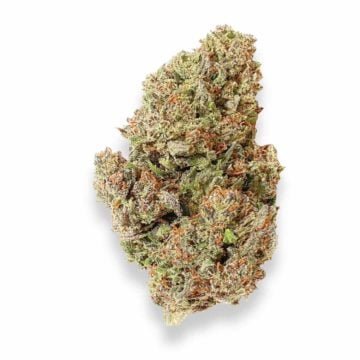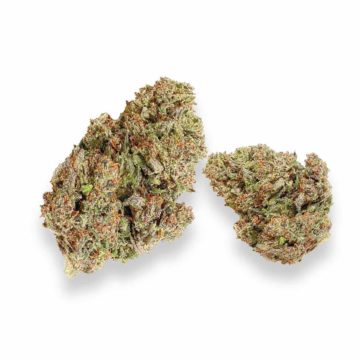
Is Recreational Weed Legal in Alaska
In this comprehensive article, we will delve into the intricate details of the legal status of recreational weed in Alaska. Our exploration will encompass the various laws, regulations, and essential points pertaining to the possession, consumption, cultivation, and distribution of recreational marijuana within the state. Whether you’re an Alaska resident seeking clarity or a visitor curious about the rules, this guide will provide you with a thorough understanding of Alaska’s stance on recreational cannabis.
This post is intended as information and for general knowledge only. It is not a substitute for medical advice, diagnosis, or treatment. It is recommended that you talk to a healthcare professional about this before introducing cannabinoids into your daily routine (especially if you have been diagnosed with any medical conditions or are under any medication). It is not recommended to drive or operate any machinery when using cannabis- or hemp-derived products. Use responsibly!
Legalization of Recreational Weed in Alaska
Alaska made history with its decision to legalize recreational marijuana, joining the ranks of states pioneering progressive marijuana laws. The voter-approved initiative, known as the Alaska Marijuana Control Board, played a pivotal role in this transformation. The Alaska Supreme Court’s support solidified the legality of recreational marijuana, setting a precedent for other states like New York and New Mexico to follow suit.
Possession and Personal Use
Under Alaska law, adults can possess and use a small amount of marijuana for personal use. However, it’s crucial to comprehend the distinctions between private property and public spaces when it comes to marijuana consumption. The Alaska Department of Law emphasizes age restrictions and identification requirements for purchasing and using cannabis, ensuring responsible use among adults.
Cultivation of Marijuana
For those interested in cultivating their own marijuana plants, Alaska’s regulations allow a limited number of plants per household. Whether you’re cultivating indoors or outdoors, it’s essential to adhere to the rules outlined by the Alaska Marijuana Control Office. Licensing requirements are in place to maintain oversight over personal cultivation and guarantee compliance with state laws.
Retail Regulations
The road to becoming a retail marijuana store owner involves meeting eligibility criteria and navigating the application process. The Alaska Marijuana Control Board oversees these applications and considers factors like proximity to sensitive areas. To prevent excessive purchases, there are limits on the quantity of marijuana products an individual can buy. Packaging and labeling requirements ensure clear and informative presentation of cannabis products.
Taxation and Revenue
Excise taxes on cannabis sales contribute significantly to Alaska’s revenue streams. These taxes support various sectors, including education and healthcare, offering tangible economic benefits to the state. However, it’s essential to compare projected revenue with actual financial impacts to assess the accuracy of economic forecasts.
Public Consumption and DUI Laws

Public consumption of marijuana remains a regulated area, with specific laws in place to prevent misuse. Understanding the legal blood THC concentration for driving under the influence is critical to avoiding penalties. Law enforcement agencies are proactive in addressing impaired driving and enforcing laws related to public marijuana consumption.
Medical Marijuana Regulations
Alaska’s approach to medical marijuana is distinct from its stance on recreational use. The Alaska Medical Marijuana Initiative led to the establishment of regulations for medical cannabis, which are separate from those governing recreational marijuana. The process of obtaining a medical marijuana card involves meeting specific qualifications and adhering to medical cannabis guidelines.
Local Regulations and Opt-Outs
Local governments play a crucial role in shaping marijuana regulations based on the unique needs of their communities. The concept of “opting out” allows certain areas to choose whether they want to participate in the recreational marijuana market. This localized approach can lead to disparities in access and enforcement across different municipalities.
Impact on Crime and Public Health
Analyzing changes in crime rates post-legalization is essential to understanding the broader impact of recreational marijuana. Equally important is assessing its effects on public health, including potential challenges related to addiction and mental health. Collaborative efforts between law enforcement and public health agencies are crucial in addressing these concerns.
Future Outlook
Looking ahead, Alaska’s recreational marijuana landscape holds several possibilities. The potential expansion of product offerings, such as edibles and concentrates, could cater to diverse consumer preferences. As public sentiment around marijuana evolves, it might influence future legislation, alongside political factors that could drive regulatory amendments.
Conclusion
As we conclude our exploration into Alaska’s recreational marijuana landscape, it becomes evident that staying informed is the key to responsible participation. This guide offers a detailed roadmap to understanding the nuances of possession, cultivation, consumption, and distribution of recreational cannabis within Alaska. By remaining up-to-date with the evolving legal framework and being conscious of local variations, individuals can enjoy a safe and legal experience with recreational weed in the beautiful state of Alaska.

















